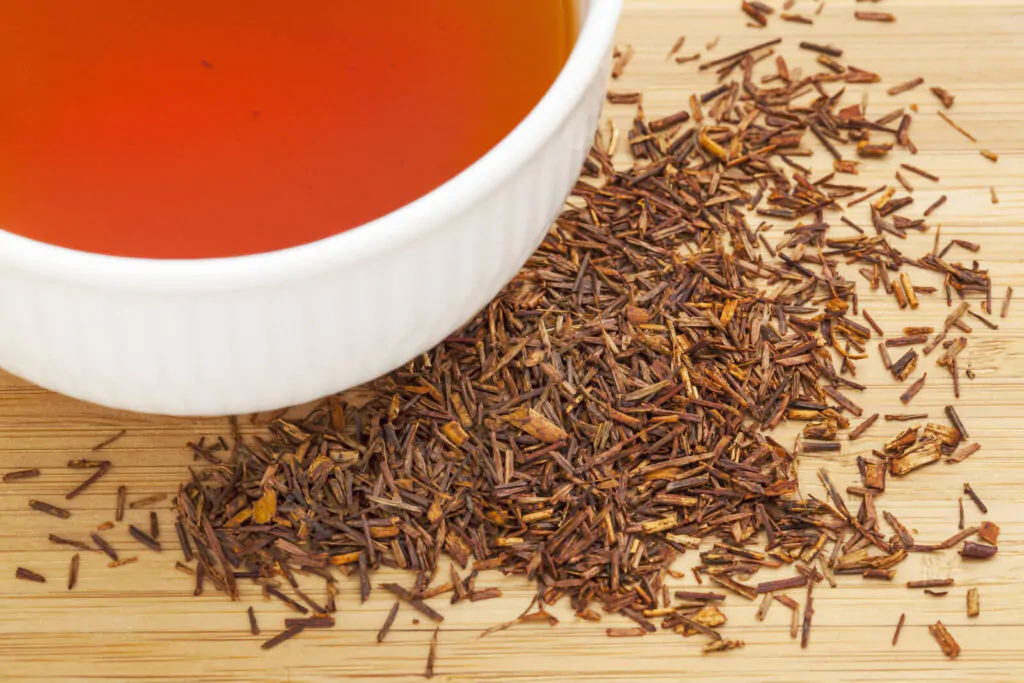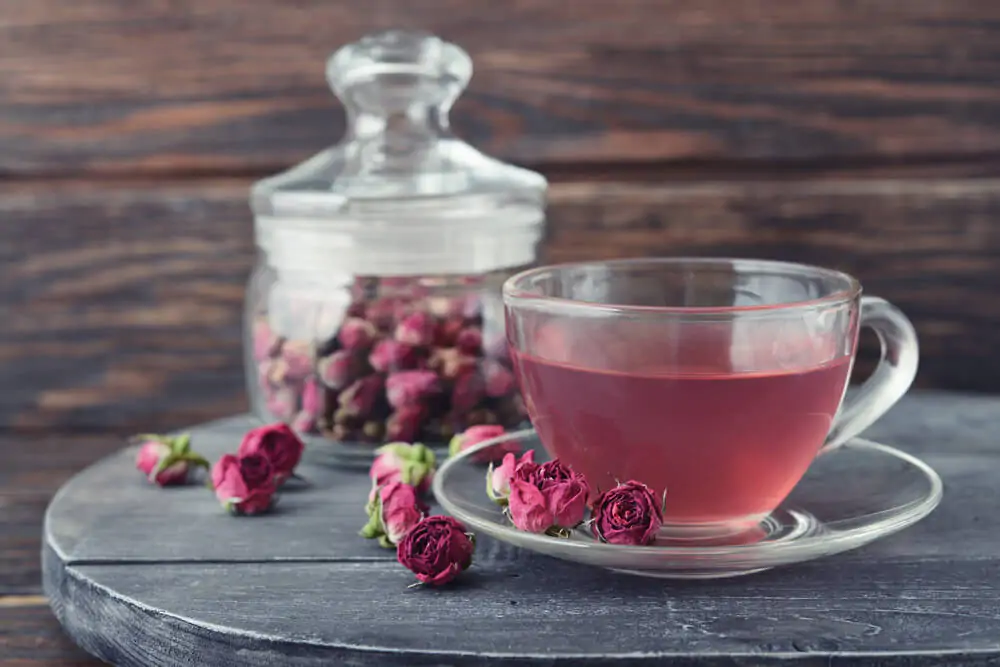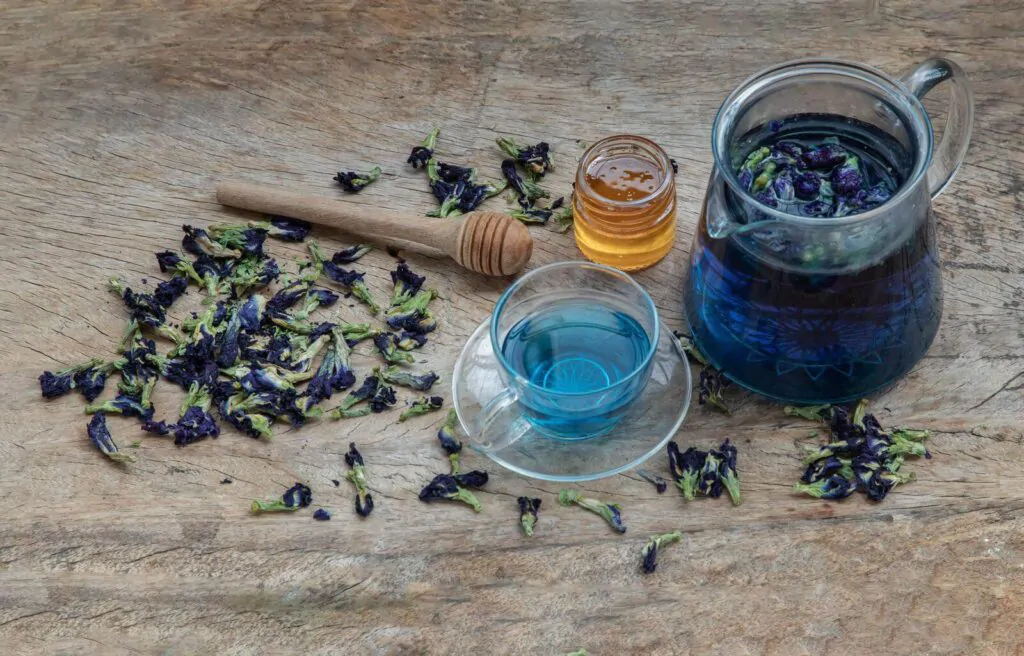Color is helpful when it comes to distinguishing different kinds of tea. Read on to find out what teas are red in color and the difference between them!

Consciously or not, color is one of the first features that often dictate your outlook toward food or drinks. Even for the typical cup of Joe, once you see that steaming black or caramel brown hue, your brain knows it will taste good before the aroma hits you.
Interestingly, one of the colors that can evoke strong emotions is red, especially when it comes to food and beverages. It is the reason why the majority of fast-food chains utilize it.
Similarly, red teas are a popular choice because of their magnificent hue. These are rooibos, hibiscus, rose, raspberry leaf, and butterfly pea tea, to name a few.
1. Rooibos Tea
Arguably the most popular type of red tea next to hibiscus is rooibos.
It is made from leaves of a South African bush called Aspalathus linearis or the red bush plant. It got its name from the leaves that display a red-brownish hue once it ferments. The same color appears, as well, once brewed into tea.

Its flavor profile is slightly floral and nutty with a hint of sweetness, which explains why it is so smooth to drink. It is often served warm with milk on the side for the complimentary creamy texture and taste.
The drink is also ideal for those who suffer from cardiovascular disease and diabetes since rooibos tea’s natural properties can help alleviate these ailments.
You might also be curious about what tea is purple.
2. Hibiscus Tea
This herbal drink comes from a plant native to West Africa called the Hibiscus sabdariffa or the roselle, a close relative of the okra plant. Aside from being processed to make tea, natives have also used it to make jams. Once brewed, the flower’s color also translates to the tea, giving it a striking red-orange tint.
It is more fruity and tarty than the rooibos, but the floral undertone is still there. The complex blend of bitterness and sourness can be off-putting to some, so it is advisable to add honey or syrup to balance it out. The beverage is often served hot or warm.
As it is high in vitamin C, the hibiscus can help enhance your immune system and assist your body’s healing process. You might also be interested in our guide on what is hibiscus tea good for.
3. Rose Tea
This flower, often associated with love, can be brewed into tea. Thankfully, all rose plant varieties are considered safe for tea-making, provided no chemical pesticides have been used. The most popular variant for tea is the pink rosa Damascena, which brings a light pinkish red (sometimes yellowish) color to the beverage.
Depending on the variant used, the flavor can range from sweet to tangy and floral to earthy. As with other examples of herbal teas, the taste can be enhanced with a teaspoon or two of honey or syrup and is best served warm, although some prefer it at room temperature to appreciate the rose’s flavor more.

Rose tea is most beneficial for women who want to ease menstrual discomfort as it can alleviate cramps and other forms of discomfort. It is also proven to help you relax and improve your mood, similar to chamomile tea’s effects, so this is ideal to drink before bedtime.
4. Red Raspberry Leaf Tea
If you are familiar with raspberry leaf tea, you might get confused as its color is closer to yellowish brown (similar to black tea) rather than red. Some drinkers prefer to include the raspberry fruit juice or other mixed berry juice for a fruitier taste, as the raspberry leaf tea itself is earthy with a hint of sweetness. Mixing those juices gives this cuppa its robust red color.
The leaves contain a compound called fragarine, which aids in pregnancy symptoms such as nausea and vomiting. In addition, the same compound was found to have helped in shortening the first and second stages of labor.
5. Butterfly Pea Flower Tea
Butterfly pea flower tea, also known as “blue tea” because of its initial bright blue color, changes its hue depending on the ingredients you add. This color change is because the anthocyanin compound reacts to changes in pH levels.
Since hibiscus is acidic, once you add it to the butterfly pea flower tea, the color changes from blue to red! Butterfly pea powder tastes bland and leafy, so adding other kinds of tea, fruits, or sweet condiments is recommended to enhance the flavor. In contrast to the rest of the tea on our list, this is best served iced!

Health benefits-wise, though, it is rich in nutrients and antioxidants, which can help maintain the health of your hair and skin, among others.
